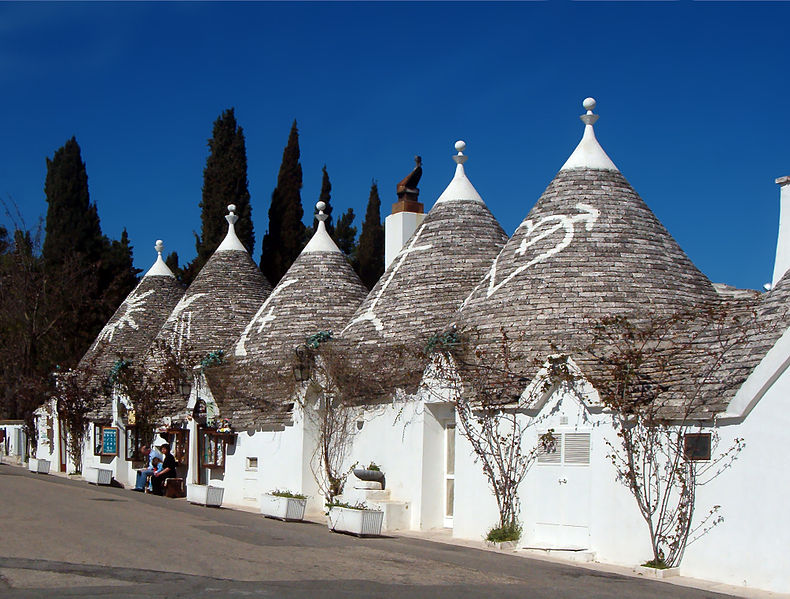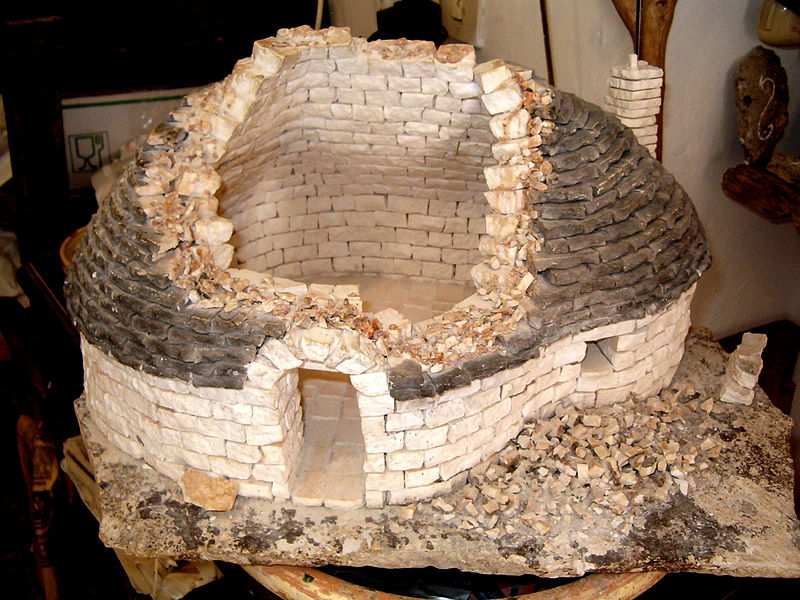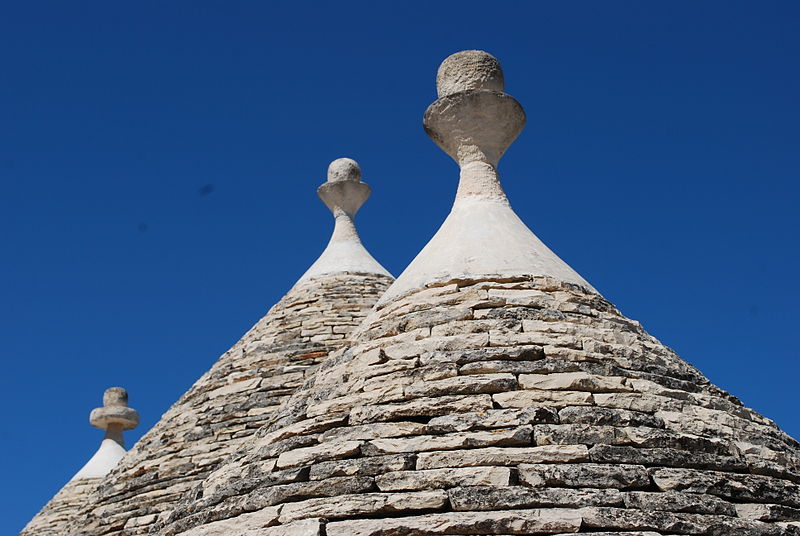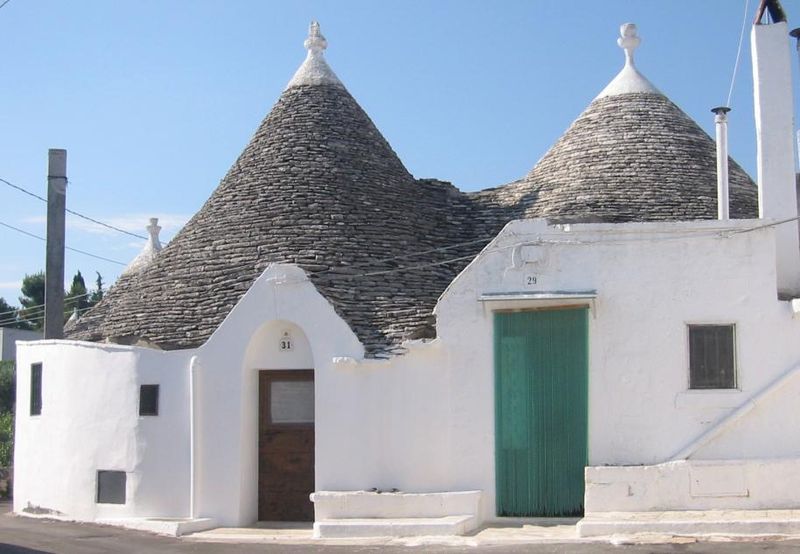
Author: Marcok via Wikipedia Commons Trulli along Via Pertica in Alberobello, Bari, Italy
Today’s blog post is taking us to Apulia (Puglia), a region in Southern Italy, and to a type of architecture that is specific to the Valle d’Itria in the Murge area of this region: the so-called Trulli. Districts made up of trulli can be found especially in the town of Alberobello in the province of Bari.
Trulli had their origin as temporary field shelters or storehouses and as permanent dwellings of agricultural labourers. The italianized term ‘trullo‘ derives from the dialect word truddu, referring to a dry stone hut, which in turn comes from the Greek word τρούλος, cupola. Trulli are basically round or square dwellings whose internal space is covered by a dry stone corbelled or keystone vault. A trullisto or trullaro in Italian is a stonemason specializing in the construction of these trulli. Trulli were formerly known under the local term casedda (pl. casedde) (Italian casella, pl. caselle).
Trulli were built singly or in groups of up to five, sometimes also as a cluster of a dozen as farmyard buildings, but for a single rural family. The houses were made from local materials, which were either hard limestone or calcareous tufa, using the technique of dry stone masonry, i.e. without any mortar or cement. Dry-stone walls are also used in the surrounding area to separate fields. Trulli are on average 0.80 m to 2.70 m wide and between 1.60 m to 2 m high (from ground level to the beginning of the vault). Each conical roof covers one room, but sometimes there are arched alcoves which provide additional space and were often used as bedrooms, with a curtain hung in front of them.

Author: Marcok via Wikipedia Commons Spaccato di un trullo in Alberobello (modello in scala)
The region were the trulli are located, the Murgia, is a karst plateau. This had implications for the construction: As winter rains immediately drain through the soil into fissures in the strata of limestone bedrock, there is no permanent surface water, and any water needed for living must therefore be caught and collected in catchment basins and cisterns.Trulli were started by digging a cistern (cisterna), and the excavated stones were then used to build the dwelling itself; the cistern was topped with a lime-mortared barrel vault or dome, above which was often the floor of the dwelling.
The roofs consist of two parts: an inner layer of limestone voussoirs, crowned by a keystone, and an exterior layer of limestone slabs which are slightly tilted outward, to make sure that rain can drain off and that the house is watertight. At the top of the conical roof, there is usually a pinnacolo, or pinnacle, made from sandstone, which takes various shapes, e.g. a cone, sphere, disk, bowl, or polyhedron, etc. which is the signature of the stonemason who built the trullo.

Author: Luuuceee via Wikipedia Commons Cime dei Trulli in Alberobello
Both the exterior wall, and often also the interior of the trullo, were rendered with lime plaster and whitewashed for protection against drafts. Heating came from an open fireplace, whose flue was concealed in the masonry and the high chimneys were made from stone. However, trulli are difficult to heat because of their design, since warm air will rise up into the interior cone and so the houses will become unpleasantly cold during the winter, as well as condensing moisture. The thick walls will keep the dwellings pleasantly cool in the summer months though.
Some of the conical roofs have a symbol painted on it, e.g. Christian symbols such as a simple cross, a cross on a heart pierced by an arrow (representing Santa Maria Addolorata, or Our Lady of Sorrows), or a circle divided into four quarters with the letters S-C-S-D in them (for Sanctus Christus and Sanctus Dominus or the initials of Santo Cosma and Santo Damiano, two local saints), a dove symbolising the Holy Spirit, etc. These symbols are not ancient, but date from the late 20th century, when they were added when the roofs were repaired.

Author: Niels Elgaard Larsen via Wikipedia Commons Trulli in Alberobello
The trulli‘s archaic form is related to the Sardinian nuraghe, the Balearic talayots and the sesi of Pantelleria.
